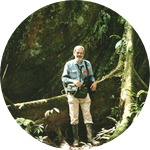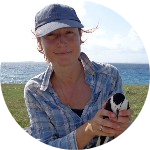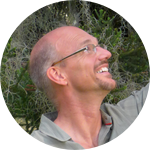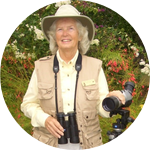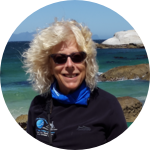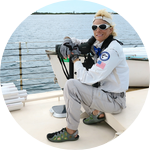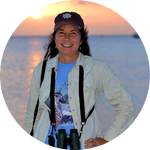About This Project
Seabirds are among the most endangered of all vertebrate groups. Loss of Caribbean populations is ongoing; many documented colonies from the 1990s and 2000s are now inexplicably gone. We will use surveys and mark-recapture techniques to find out whether the birds have moved, suffered nesting failure from predation, or are changing their behavior. Our inventories have detected declines. Now we must discover what happened so that we can reverse the changes through conservation and management.
Ask the Scientists
Join The DiscussionWhat is the context of this research?
For decades, naturalists have worked to inventory seabirds around the world and stop their alarming declines. In the Northern Bahamas, Kushlan and Steinkamp (2007) documented thousands of breeding seabirds, but in 2015, Conservian revisited these sites and found few nesting seabirds. Similar trends have been documented in the Grenadines, Culebra, and Great Exuma, but we have little information about what caused the declines. Another project is working on this mystery in the Grenadines. The birds may have moved to new breedings sites, taken a year off due to weather, or declined from egg harvesting, predation, or other causes, such as impacts from climate change. Our project will target the Northern Bahamas where seabird colonies were recently documented as having declined or disappeared.
What is the significance of this project?
The most dramatic declines have been documented among coastal seabirds such as Brown Noddies and Least, Roseate, Royal, and Sandwich Terns. Coastal ecosystems include coral reefs, mangroves, flats, and shelves that are also critical for humans and wildlife. We need a proportionate response to the factors causing declines, but we cannot act without knowing the exact nature of the threats. If the birds are suffering predation on nest sites from rats or egg collectors, we can manage predation. If birds are simply moving to different islands or skipping years of nesting due to weather, then they should show up during our project. If they have truly disappeared due to threats to food supplies, from pollution, or climate change, we need to reduce or eliminate those threats.
What are the goals of the project?
Starting in summer 2017 we will search the islands and find where the northern Bahamian seabirds are, what is happening to them and how to address the changes. When we find colonies we will capture birds and band as many as we can using field-readable bands, so that if they move to other colonies we will be able to see them. We are specially interested in coastal tern species that have been the most likely to disappear in other parts of the Caribbean Including Culebra (Puerto Rico) and other parts of the Bahamas. We will determine whether changes may be due to habitat loss or degradation, or predation by alien species such as cats or rats. We will use analysis of feathers, fecal, and food samples to assess foraging locations and species.
Budget
The funding for this project will allow BirdsCaribbean to survey remote and inaccessible seabird colonies in the Bahamas, by paying for traveling expenses by air and sea for two of the team's scientists for 2017. This is made possible through partnering with Conservian, an NGO which began a new monitoring and habitat restoration program for coastal birds in the Bahamas in 2016. Conservian's project objectives are aligned with ours so that together we can accomplish more through teamwork, greatly increasing the scientific outputs from the joint expedition and enhancing the conservation outcomes. Contributions from volunteer citizen scientists paying their own way and participating under the leadership of the lead scientist will add to the capacity of the team to carry out the work.
Endorsed by
Meet the Team
Affiliates
Affiliates
Affiliates
Affiliates
Team Bio
BirdsCaribbean, Conservian, and the Bahamas National Trust together make a phenomenal team of scientists, volunteers and regional experts working together to monitor and protect coastal birds including shorebirds and seabirds. Our team contains some of the leading field biologists in the region. The partnership with BNT means that we will have the necessary links to ensure that our work will be immediately translatable into conservation action on the ground when necessary.
William Mackin
I am fascinated by nesting behavior in birds and have studied Audubon's Shearwaters, White-tailed Tropicbirds, and other seabirds in the Bahamas, Tobago, and around the Caribbean. These seabirds are poorly known, declining, and mysterious. Why do they nest in huge numbers on some islands and not others? How do they coordinate their breeding activities with mates and neighbors? Where do they forage? I have collaborated with other scientists and many volunteer assistants to address these questions since 1998.
My details:
UNC-Chapel Hill, PhD in Biology 2004 titled "Breeding Behavior and Communication of Audubon's Shearwater in the Bahamas" under R. Haven Wiley
Harvard University A.B. cum laude 1997, concentrating in Biology
Board member of Environmental Protection in the Caribbean (EPIC) since 2012.
I have published numerous peer reviewed articles, book chapters, and maps on seabird conservation, and I am a master bird bander under the USGS Bird Banding Laboratory. I have banded thousands of shearwaters, tropicbirds, terns, and even a couple of owls under my permit, and I am competent with using Program Mark to analyze mark-recapture data.
Ann Sutton
I am passionate about conservation of Caribbean birds and their habitats, especially seabirds. I have been surveying colonies and working to promote seabird conservation for more than 35 years. Since studying Sooty Terns and Brown Noddies at the Morant Cays, Jamaica for my PhD at University of the West Indies, I have continued to monitor Jamaican seabird colonies.
As co-chair of the BirdsCaribbean Seabird Working Group, I promote awareness of the need for conservation of seabirds and encourage others to get involved in seabird monitoring. I am specially interested in developing cost-effective long-term monitoring programs for birds and their habitats, including banding.
In 2014, I was the lead author of a BirdsCaribbean manual for surveying Caribbean seabirds. I am also the lead author for a field guide to Jamaican birds "A photographic guide to the birds of Jamaica" published by Princeton University Press in 2009.
Margo Zdravkovic
I have a life-long passion for coastal and marine wildlife preservation, and an intense desire to bring effective methods of practical conservation to the field. I believe that human thriving is dependent upon all species surviving. One of my personal missions is to inspire appreciation and care for the natural world by illuminating our individual and collective connection to the Earth which sustains us.
I am CEO and co-founder of the 501c3 non-profit Conservian and its field-based, science-driven Coastal Bird Conservation program. We are dedicated to research, monitoring, and protection of coastal birds and their habitats throughout the Western Hemisphere. Conservian’s primary goals include working with site managers, landowners, and the public to increase coastal bird populations by increasing habitat quality. In 2016 Conservian and partners began the first program in the Bahamas to implement on-the-ground protective and restorative measures to limit human-caused disturbance, and control invasive Casuarina pine at key Piping Plover, shorebird, and seabird sites.
I have directed research and conservation work involving breeding and migratory shorebirds and seabirds on the U.S. Atlantic and Gulf Coasts, Mexico, and the Bahamas since 2000. I also serve on the Snowy Plover and American Oystercatcher Working Groups in the U.S., and have authored numerous papers and reports concerning beach-nesting birds on the Gulf of Mexico, including the Wilson’s Plover (Charadrius wilsonia) Range-wide Species Conservation Action Plan published by Manomet Center for Conservation Sciences. I am actively involved in research and restoration of the Gulf Coast in response to the BP oil spill, and am presently authoring a U.S. Gulf Coast Beach-nesting Bird Assessment and Management Guidelines for the National Fish and Wildlife Foundation. I hold a bachelor’s degree from the University of Pennsylvania, a master’s degree from Brandeis University, and a USGS master bander’s permit.
Lisa Sorenson
Caribbean birds are infinitely fascinating and unique. Unfortunately they face many human-caused threats such as destruction of their habitat, pollution, introduction of harmful invasive species, and impacts from climate change. I have been working in the Caribbean for 30 years to study and conserve these birds through research, education, capacity building and conservation action.
Waterbirds are of special interest to me—they are especially vulnerable because of their use of coastal habitat and wetlands. I've spent countless hours studying and carrying out surveys of different species of ducks, herons, egrets, marsh birds, shorebirds and seabirds, including studying White-Cheeked Pintails in the Bahamas for my PhD. I am also a co-author on several books and manuals on studying and monitoring waterbirds and wetlands. I'm especially interested in gathering data that will not only advance our scientific understanding of these species, but applying that knowledge to conserve them. Raising awareness and encouraging local citizens and partners to get involved in science, monitoring and conservation is vital to ensure long-term survival of these amazing birds.
I have a B.S. in Wildlife, Fisheries and Conservation Biology from the University of California, Davis and a Ph.D. in Ecology, Evolution and Behavior from the University of Minnesota, Minneapolis. As Executive Director of BirdsCaribbean, a 501 (c) 3 nonprofit dedicated to the conservation of Caribbean birds and their habitats, I lead a number of BirdsCaribbean projects and programs that raise awareness, promote sound science, and empower local partners to build a region where people appreciate, conserve and benefit from thriving bird populations and ecosystems.
Scott Johnson
I am a Bahamian terrestrial biologist with a passion for birds and reptiles in The Bahamas. I enjoy learning about my islands and the amazing wildlife that can be found here. I am currently a Science Officer at the Bahamas National Trust, in charge of avian and terrestrial matters and have been on many field research expeditions studying seabirds, iguanas, Flamingos, endemic Bahamian Orioles, and snakes. I am also assisting in the training of Bahamians, working with them to become astute bird tour guides on islands such as Andros and Inagua.
Additional Information
Check out our information pages including the West Indian Breeding Seabird Atlas, Conservian, Bahamas National Trust, and BirdsCaribbean.
Project Backers
- 63Backers
- 102%Funded
- $5,225Total Donations
- $82.94Average Donation
